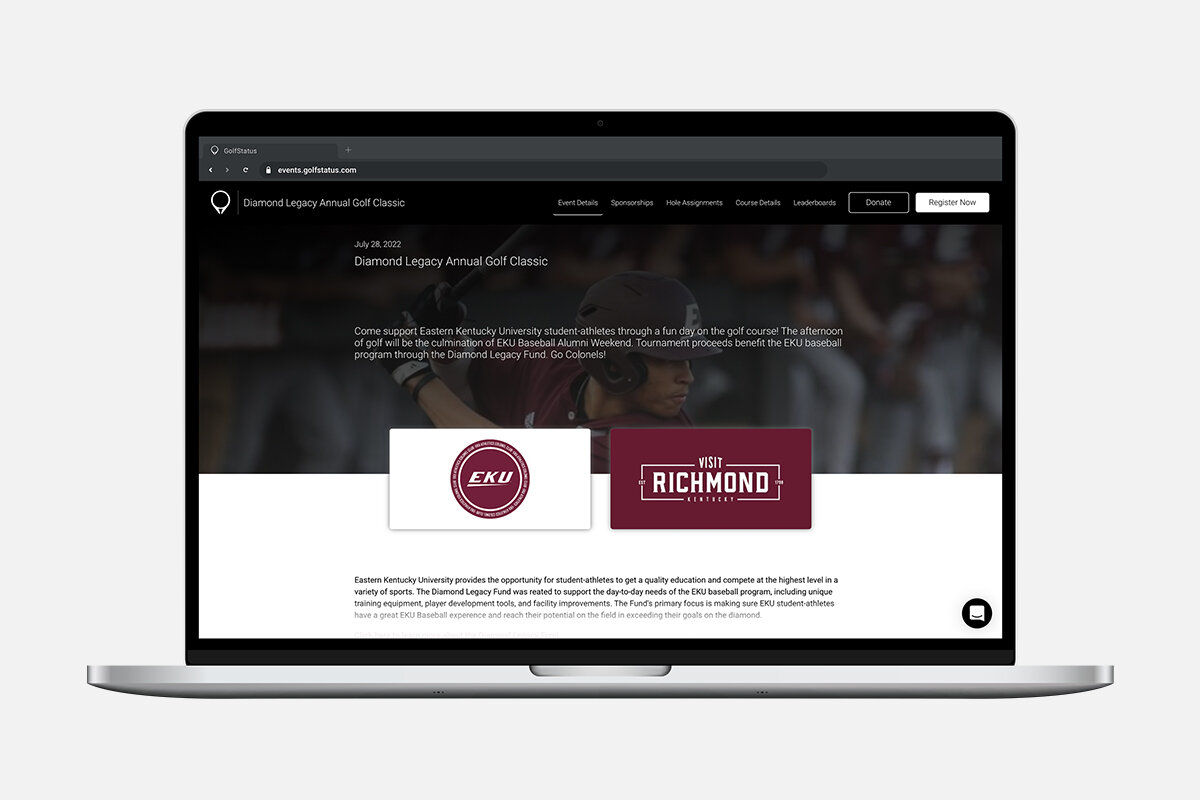Nonprofit event organizers are used to finding ways to squeeze every cent out of limited budgets. When it comes to your golf fundraiser, whether you’re planning an event for the first time or looking to level up an event that’s been going on for years, there are a number of tools available at no cost that help make planning, prep, and promotion easier and more impactful. Best of all, these tools won’t affect your budget or event’s bottom line.
1. Golf Event registration website
An event registration website is one of the simplest—and most impactful—tools you can have for your golf tournament. A event website makes it easy to promote your event and collect player and sponsor information, saving you a ton of time and effort. You can use it to share more information about your organization’s mission, what the golf tournament is raising money for, and keeps golfers and spectators involved before, during, and after your event. (Through the Golf for Good program, qualifying nonprofits can get a free website for their golf fundraiser built by the GolfStatus team.)
golfstatus.org
2. Social Media
If your organization isn’t already on social media platforms like Facebook, Twitter, and Instagram, you’re missing out on a huge opportunity to engage with constituents, recognize donors and sponsors, and raise awareness for your mission. Promote your golf fundraiser (with a link to your event website where folks can purchase teams or sponsor packages) in the months and weeks leading up to your event and invite your constituents to share with their personal networks. It’s a good practice to give sponsors shoutouts on social media, providing additional exposure and a bigger return on their investment. You can also share pictures, impact stories, results, and donation appeals from your golf event.
Facebook, Twitter, and Instagram
3. Canva
Canva is an online design and publishing tool. The free version has a number of built-in templates and features that make it easy for anyone—even if you don’t have any graphic design experience—to create attractive imagery for your golf tournament. Use it to design a tournament graphic, resize logos, or create promotional images to share on social media. Canva also has learning opportunities and resources on design, marketing, and branding.
canva.com
4. GIF Maker
This no frills, simple tool lets you create animated gifs, slideshows, and video animations for your event’s website, social media, or organizational website with just a few clicks. Upload images, set the size and animation speed, determine if the slideshow should loop, and even add music.
gifmaker.me
5. QR Code Maker
A QR (quick response) code makes it easy for people to use their phone’s camera function (or other QR code reader) to quickly get to your event website. Simply include the code on all printed tournament materials likeflyers, personal invitations, save the date postcards, and sponsorship requests for easy access to purchase team and sponsorship packages and make a donation to your organization. Customize the appearance of your QR code with frames, color, and even your organization or event logo.
qr-code-generator.com
6. Any Video Converter
This free tool helps you use video effectively on your event website, organization website, and social media. Need to download a video you own from YouTube? Check. Reduce the size of a video file? Check. Convert a video to a different format? Check.
Any-video-converter.com
7. Golf Event Management Software
Most event management technology isn’t built to handle the nitty gritty details of a golf fundraiser. Organizers need one specifically designed for golf events, with features that help spread the word, collect registrations and payment, recognize sponsors and offer premium sponsor exposure, coordinate with the golf facility, communicate with golfers, avoid hours of duplicative data entry, and keep everything organized in one space. GolfStatus provides all this and more, plus, qualifying 501(c) organizations and those holding events that benefit them can get access to GolfStatus’s golf event management platform at no cost through the Golf for Good program.
golfstatus.org
Get Started With Golf for Good
Through Golf for Good and GolfStatus.org, the social impact division of golf technology company GolfStatus, nonprofits and organizations doing social good can qualify for no-cost access to GolfStatus’s full-featured golf event management software. Get a free event website built by the GolfStatus team plus features that save time, keep you organized, and help you handle all the golf-specific details.





























